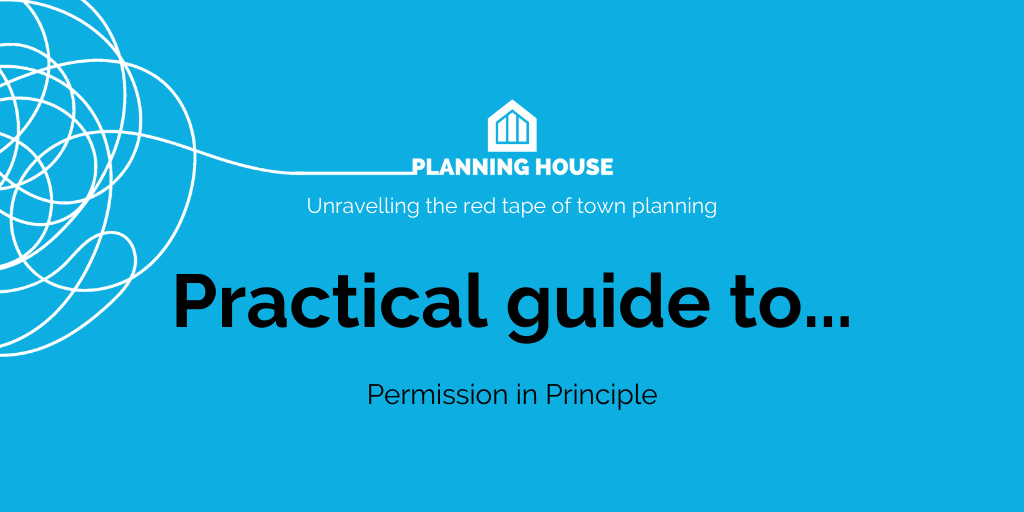What is Permission in Principle?
Permission in Principle (PIP) is a process of gaining planning permission, primarily reserved for housing development. Although as long as housing occupies the majority of the overall floorspace compatible uses could be included in a scheme.
If you choose to go down this route, there are two stages of consent. PIP is the first of these and essentially does exactly what it says on the tin; establishes whether your plans are suitable “in-principle”.
The second stage, “technical details consent” looks more closely at your detailed development proposals.
Essentially, Permission in Principle allows the process of gaining planning permission to get off to a quicker and simpler start without costing a fortune.
How do you Apply for Permission in Principle?
There are two ways through which PIP can be granted. The first is through sending a valid application to your local authority. Secondly, if a site is entered into Part 2 of the local authority’s brownfield land register, Permission in Principle is automatically granted.
What do I need to Submit to Make an Application?
Applying for PIP is a fairly simple process, as your plans will not be considered in detail at this stage. All you need to submit is a fully completed application form, a clear plan of the land you are applying for permission on (drawn to scale and indicating the direction of North), as well as the relevant application fee.
How Much Does Permission in Principle Cost?
The fee to apply for Permission in Principle will vary based on the site’s area. The fee current is £402 for each 0.1 hectare (or part thereof). You can find more details on this in the Town and Country Planning (Fees for Applications, Deemed Applications, Requests and Site Visits) (England) Regulations 2012.
Are there any Exclusion Criteria from using PIP?
A detailed list of developments that cannot be granted Permission in Principle can be found under Article 5B of the Town and Country Planning Order 2017. These include householder, major* and Environmental Impact Assessment developments. Sites that are classes as a habitat development and those which require a legal agreement are also unsuitable for Permission in Principle.
What will the Council consider during PIP Assessment?
The issues to be considered during the Permission in Principle stage are limited to land use, location and amount of proposed development. Anything further than this will be considered in the technical details consent stage, after Permission in Principle has been granted.
How Long Will it Take to Receive a Decision on a PIP Application?
Your local planning authority should decide as swiftly as possible. Unless an alternative timescale has been negotiated with you, the standard time limit for a decision is 5 weeks from the day after receipt of the application.
What is the Time Limit on a Permission in Principle Assessment?
If Permission in Principle is applied for and granted, this permission lasts for 3 years. Alternatively, if PIP is granted via the brownfield land register route, the duration of the permission is increased to 5 years by default.
Can you Appeal a Refusal?
It is not possible to appeal a refusal in which the local planning authority has decided not to enter a site onto the brownfield land register, however if Permission in Principle is refused following an application, you do have a right to appeal this decision. Planning House secured consent for Permission in Principle via the appeal route, take a LOOK.
Can planning conditions be attached to a grant of PIP?
It is not possible for conditions to be attached to a grant of a PiP and its terms may only include the site location, the type of development and amount of development. However be aware that CIL may apply to a development consented thought this route. If you want more information on CIL check out our FREE EBOOK.
What’s Next for PIPs?
Watch this space, the Government are considering extending Permission in Principle to major developments, allowing more freedom for developers to access a fast-track route in securing planning permission.
How can we help with a PiP application?
If all this is making your head hurt then it might be something you want to get help with. Although a PiP application process can be more straightforward than applying for outline or full planning permission, it can take you into areas of planning which may be something that you wish to seek assistance with.
If you need any help with the application process then please get in touch.
We have much more information for you in our series of eBooks which cover everything from the very basics of town planning to application processes and what self builders need to consider. Download the eBook which best suits your needs right HERE.
*Major development – is for 10 or more homes, or the site area is 0.5 hectares or more. For non-residential development it means floorspace of 1000m2 or more, or a site of 1 hectare of more.


